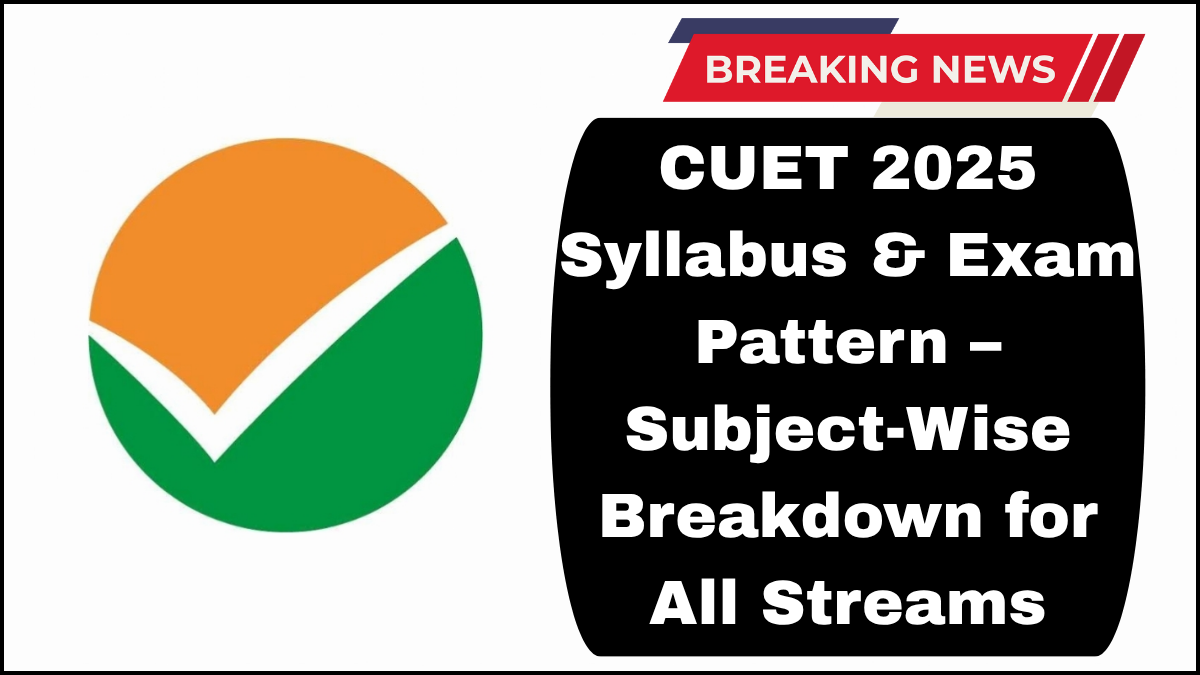The CUET 2025 (Common University Entrance Test) will continue to serve as the unified gateway to undergraduate admissions in central and participating universities across India. With increasing competition and evolving trends, understanding the updated CUET 2025 syllabus and exam pattern is crucial for aspirants across all streams—Science, Commerce, and Humanities. This guide breaks down the subject-wise structure, key components, and strategy to help you prepare effectively.

What Is CUET 2025?
CUET 2025 is a national-level entrance exam conducted by the National Testing Agency (NTA), aiming to streamline admissions by offering a common platform for students and universities. It tests candidates in subject-specific knowledge, general aptitude, and language proficiency.
CUET 2025 Exam Pattern Overview
CUET 2025 follows a structured and modular format. The exam is divided into three key sections:
-
Section I (Languages):
-
Divided into IA and IB.
-
IA includes 13 major languages like English, Hindi, Bengali, Tamil, etc.
-
IB offers 20 additional regional and international languages.
-
Students can opt for up to 3 languages in total.
-
-
Section II (Domain-Specific Subjects):
-
Offers 27 domain-specific subjects such as Physics, Accountancy, History, Psychology, etc.
-
Candidates can choose up to 6 domain subjects, depending on university and course requirements.
-
-
Section III (General Test):
-
Tests general awareness, logical reasoning, quantitative aptitude, and current affairs.
-
Recommended for courses that require a broader skill set or aptitude component.
-
Each section is conducted online (Computer-Based Test) with objective-type questions (MCQs). The exam duration ranges from 45 to 60 minutes per section, depending on the subject.
Subject-Wise Breakdown of CUET 2025 Syllabus
Let’s dive into the stream-specific syllabus breakdown based on the NTA’s expected guidelines.
For Science Stream
Physics
-
Motion, Laws of Motion, Work and Energy
-
Thermodynamics, Oscillations, Waves
-
Electricity, Magnetism, Modern Physics
-
Practical and experimental skills will be tested indirectly
Chemistry
-
Physical Chemistry: States of Matter, Thermodynamics, Equilibrium
-
Organic Chemistry: Hydrocarbons, Functional Groups
-
Inorganic Chemistry: Classification of Elements, Periodicity, Chemical Bonding
Mathematics
-
Algebra, Calculus, Trigonometry, Coordinate Geometry
-
Probability, Statistics, Linear Programming
-
Emphasis on analytical problem-solving and concept application
Biology
-
Cell Biology, Genetics, Evolution
-
Physiology (Plant and Animal)
-
Ecology and Environment, Biotechnology
For Commerce Stream
Accountancy
-
Accounting for Not-for-Profit Organizations
-
Partnership Firms and Companies
-
Financial Statements Analysis, Cash Flow Statements
Business Studies
-
Principles and Functions of Management
-
Business Environment
-
Marketing, Financial and Human Resource Management
Economics
-
Microeconomics: Demand and Supply, Market Equilibrium
-
Macroeconomics: National Income, Money and Banking, Government Budget
Mathematics / Applied Mathematics
-
Functions, Matrices, Probability
-
Business-related applications such as Interest, Taxation, Linear Programming
For Humanities/Arts Stream
History
-
Ancient to Modern Indian History
-
Themes like Industrialization, Nationalism, World Wars
Political Science
-
Indian Constitution, Political Theory
-
Contemporary World Politics, Globalization
Geography
-
Physical Geography (Landforms, Climate)
-
Human Geography (Population, Settlements)
-
Map interpretation and data analysis
Psychology
-
Human Behaviour, Development, Motivation
-
Cognitive and Social Psychology
Sociology
-
Indian Society and Social Change
-
Culture, Social Institutions, Stratification
Philosophy
-
Indian and Western Philosophical Traditions
-
Logic, Ethics, Metaphysics
Language Section Syllabus (Section I)
-
Reading Comprehension (Factual, Literary, Narrative)
-
Vocabulary, Grammar Usage
-
Literary Devices and Figures of Speech
-
Based on NCERT Class 12th standard language curriculum
CUET 2025 Preparation Strategy
-
Understand University-Specific Requirements: Not all programs require the same domain subjects. Always cross-check the eligibility and domain subject combinations.
-
Follow NCERT Books Rigorously: The CUET 2025 syllabus closely aligns with Class 12th NCERT content.
-
Time Management and Mock Tests: Practice under timed conditions. Focus on accuracy and speed.
-
Subject Priority: Choose subjects you are strongest in to increase your chances of scoring high.
Key Highlights of CUET 2025
-
Exam Mode: Computer-Based Test (CBT)
-
Question Type: Multiple Choice Questions (MCQs)
-
Marking Scheme: +5 for correct, -1 for incorrect
-
Languages Offered: Over 30 language options
-
Number of Questions: Typically 40 out of 50 need to be attempted per subject
FAQs on CUET 2025 Syllabus and Exam Pattern
Q1. Is the CUET 2025 syllabus the same as Class 12?
Yes, the domain subjects are largely based on the NCERT Class 12 syllabus.
Q2. Can I choose subjects from different streams?
Yes, CUET allows flexibility. You can mix subjects across streams as long as the course you’re applying for allows it.
Q3. How many subjects can I choose for CUET 2025?
You can choose up to 6 domain subjects and 3 languages, depending on the course and university.
Q4. Is Section III (General Test) mandatory?
No, it’s optional. It’s required only for specific courses and universities. Check the respective university requirements.
Q5. Will there be negative marking in CUET 2025?
Yes, 1 mark will be deducted for every incorrect answer.
click here to learn more